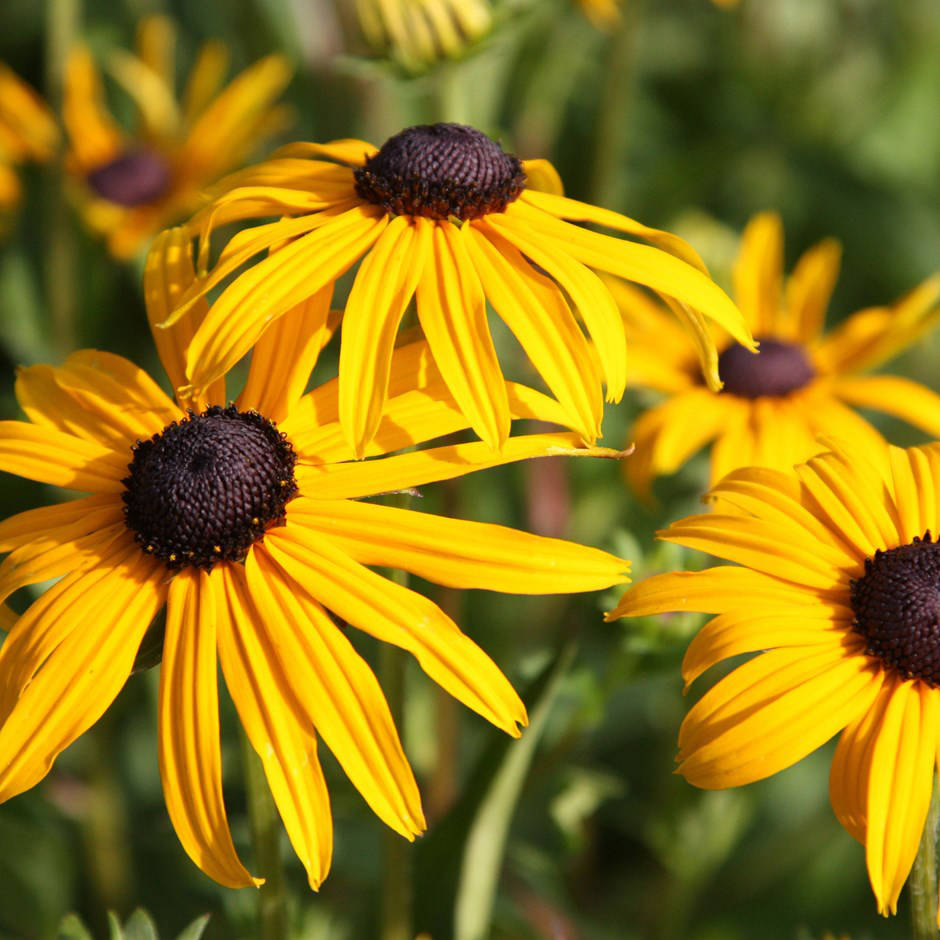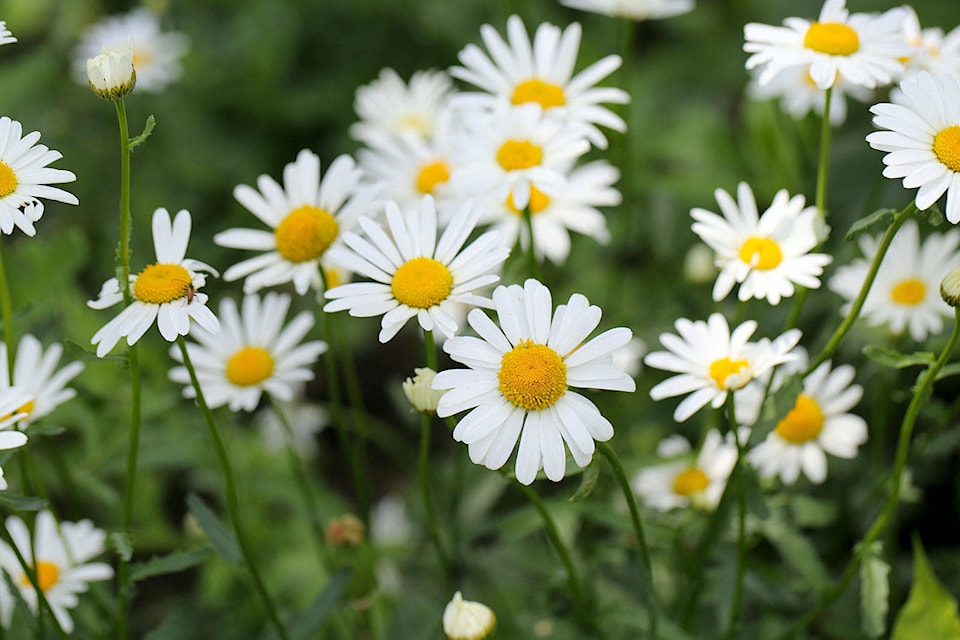Ellen Presley
Special to The Record
Looking for something simple to make you happy? Try planting daisies. There are over 20,000 species of plants with the daisy shape. Daisy comes from an old English word meaning (Day’s eye) because they open at dawn. Just looking at a daisy can bring a smile to your face and there is something so sunny, playful and whimsical about them that it melts all your worries away.
When we first think of a daisy, we often start with Leucanthemum (Shasta Daisy) which is a wonderful classic for the garden. They come in the simple form with a single layer of white petals surrounding a golden center like ‘Snowcap’ (12-15”) or with a frilly yellow centre like ‘Real Glory’ (24”). Then there is ‘Real Charmer’ (20”), which has large double- creamy yellow flowers with fringed petals. Or you can go wild with ‘Crazy Daisy’ (25”), which has masses of double white petals.
Rudbeckia (Black Eyed Susan) is a wonderful daisy-shaped perennial that is long-lived and long flowering. The most common variety is ‘Goldsturm’ (2-3’), which is a colorful, fuss-free plant that makes an excellent cut flower. It has bright golden yellow petals with a black center and in 1999 was honoured with the Perennial Plant of the Year award. There are several varieties like ’Prairie Sun,’ which has the yellow petals but a green centre, or ‘Cherry Brandy’ (24”) that has maroon-red petals with a dark centre, or the amazing ‘Herbstsonne’ (4-7’) that is huge and makes a bold statement along the back of the border or against a fence line.
Daisies come in a variety of height and sizes that can be utilized in a myriad of ways from pots and containers, to garden beds or en masse in meadows. Most daisies are a great source for pollen production, easy to grow, make an excellent and long-lasting cut flower, and create a spectacular floral display. They thrive in full sun but will tolerate some shade and will become fairly drought-tolerant once established. As a bonus, they are deer- and rabbit-resistant and attract butterflies and hummingbirds.
When you start looking around, you begin to see many other plants that have the daisy shape. Argyranthemum (Marguerites) which come in several colors, the simple Chamomile daisy (which we make a tea from to calm us down at night and help us sleep), Coreopsis (Tickseed) that attract bees and butterflies, the long blooming Gaillardia which gives your garden color from spring to fall and the medicinal echinacea (cone flower). Gazanias and Delospermum (ice plant) are criticized because they only open their colorful petals during the day and close at night. But I can’t help feel that they need to rest at night so they can store up energy and when the sun shines, they absolutely radiate with their bright colors and bring us such joy.
With so many forms of daisies in the world, I wonder if it is nature’s way of reminding us to live life simply. What a wonderful way to start each day fresh and new and open to all the amazing possibilities. Happy gardening.
Ellen Presley is the owner of Anderton Nursery.

